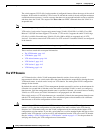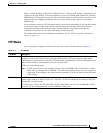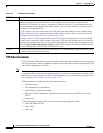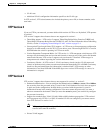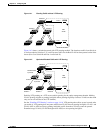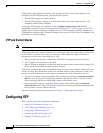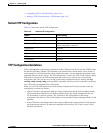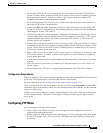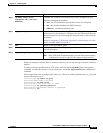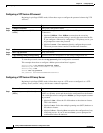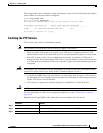
14-8
Catalyst 2960 and 2960-S Switch Software Configuration Guide
OL-8603-09
Chapter 14 Configuring VTP
Configuring VTP
VTP pruning is not designed to function in VTP transparent mode. If one or more switches in the
network are in VTP transparent mode, you should do one of these:
• Turn off VTP pruning in the entire network.
• Turn off VTP pruning by making all VLANs on the trunk of the switch upstream to the VTP
transparent switch pruning ineligible.
To configure VTP pruning on an interface, use the switchport trunk pruning vlan interface
configuration command (see the “Changing the Pruning-Eligible List” section on page 13-18). VTP
pruning operates when an interface is trunking. You can set VLAN pruning-eligibility, whether or not
VTP pruning is enabled for the VTP domain, whether or not any given VLAN exists, and whether or not
the interface is currently trunking.
VTP and Switch Stacks
Note Stacking is supported only on Catalyst 2960-S switches running the LAN base image.
VTP configuration is the same in all members of a switch stack. When the switch stack is in VTP server
or client mode, all switches in the stack carry the same VTP configuration. When VTP mode is
transparent or off, the stack is not taking part in VTP.
• When a switch joins the stack, it inherits the VTP and VLAN properties of the stack master.
• All VTP updates are carried across the stack.
• When VTP mode is changed in a switch in the stack, the other switches in the stack also change VTP
mode, and the switch VLAN database remains consistent.
VTP version 3 functions the same on a standalone switch or a stack except when the switch stack is the
primary server for the VTP database. In this case, the MAC address of the stack master is used as the
primary server ID. If the master switch reloads or is powered off, a new stack master is elected.
• If you do not configure the persistent MAC address feature (by entering the stack-mac persistent
timer [0 | time-value] global configuration command, when the new master is elected, it sends a
takeover message with the new master MAC address as the primary server.
• If persistent MAC address is configured, the new master waits for the configured stack-mac
persistent timer value. If the previous master switch does not rejoin the stack during this time, then
the new master issues the takeover message.
For more information about the switch stack, see Chapter 7, “Managing Switch Stacks.”
Configuring VTP
These sections contain this configuration information:
• Default VTP Configuration, page 14-9
• VTP Configuration Guidelines, page 14-9
• Configuring VTP Mode, page 14-11
• Enabling the VTP Version, page 14-15
• Enabling VTP Pruning, page 14-16





